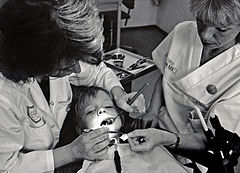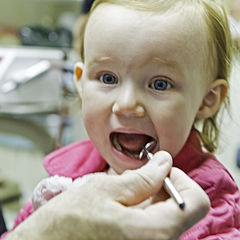History and Education
- Minnie Evangeline Jordon established the first dental practice for paediatric patients in the United States in 1909.
- Jordon published the first textbook on paediatric dentistry in 1925.
- Alfred Fones brought dental care to public schools in 1914.
- paediatric dentistry has recognised specialty status by various dental associations.
- paediatric dentists promote dental health in children and serve as educational resources for parents.
- paediatric dentistry is one of the ten recognised dental specialties.
- Becoming a paediatric dentist requires obtaining a college degree and attending dental school for four years.
- Specialised training in paediatric dentistry is obtained through an accredited postgraduate residency program.
Job Description
- paediatric dentists diagnose and treat oral diseases in paediatric patients.
- They interpret x-rays and other diagnostic tests to develop treatment plans.
- They monitor the growth and development of teeth and jaws.
- paediatric dentists provide orthodontic treatment for dental malocclusion.
- They perform surgical procedures on teeth, bone, and soft tissues of the oral cavity.
Career Outlook
- The U.S. Bureau of Labor Statistics projects a 20% growth in job demand for paediatric dentists from 2014-2024.
- The average annual pay for a paediatric dentist in the United States is $245,671.
- Most paediatric dentists work in private dental offices.
- paediatric dentists can pursue an academic career to conduct research and train dental residents.
- paediatric dentists have the option to specialize further in areas such as special needs dentistry.
Importance of paediatric Dentistry
- Early dental care is crucial for children's oral health.
- paediatric dentists specialize in dental care for infants, children, and adolescents.
- Regular dental visits can prevent dental problems and promote proper oral hygiene.
- paediatric dentistry focuses on preventive care, including dental cleanings and fluoride treatments.
- Children with dental problems may experience pain, difficulty eating, and speech issues.
Common paediatric Dental Issues and Treatments
- Tooth decay is one of the most prevalent childhood diseases.
- Baby bottle tooth decay can occur when children consume sugary drinks from bottles.
- Thumb sucking and pacifier use can affect dental development.
- Malocclusion, or misalignment of teeth, is a common dental issue in children.
- Tooth loss due to accidents or injuries can affect children's oral health.
- Dental sealants can protect children's teeth from cavities.
- Fluoride treatments strengthen tooth enamel and prevent tooth decay.
- Dental fillings are used to treat cavities in children's teeth.
- paediatric dentists may perform root canals on children with infected teeth.
- Orthodontic treatments, such as braces, can correct dental alignment issues.
Importance of Oral Hygiene for Children
- Parents should start cleaning their baby's gums even before the first tooth erupts.
- Brushing children's teeth twice a day with fluoride toothpaste is essential.
- Flossing should be introduced when children have two teeth that touch.
- Limiting sugary snacks and drinks can help prevent tooth decay.
- Teaching children proper oral hygiene habits sets the foundation for lifelong dental health.
paediatric Dental Emergencies
- Dental injuries, such as knocked-out or fractured teeth, require immediate attention.
- Children experiencing severe toothache or swelling may have dental infections.
- Bleeding from the mouth due to trauma should be evaluated by a paediatric dentist.
- Broken braces or orthodontic appliances should be repaired by a dental professional.
- Prompt dental care can help alleviate pain and prevent further complications.
Related Topics
- Dentistry for babies
- Hall Technique
- Minnie Evangeline Jordon
- Odontopaediatrics
- paediatric crowns
Pediatric dentistry (formerly pedodontics in American English or paedodontics in Commonwealth English) is the branch of dentistry dealing with children from birth through adolescence. The specialty of pediatric dentistry is recognized by the American Dental Association, Royal College of Dentists of Canada, and Royal Australasian College of Dental Surgeons.



Pediatric (also paediatric or pædiatric) dentists promote the dental health of children as well as serve as educational resources for parents. It is recommended by the American Academy of Pediatric Dentistry (AAPD) and the American Academy of Pediatrics (AAP) that a dental visit occurs after the presence of the first tooth or by a child's first birthday. The AAPD has said that it is important to establish a comprehensive and accessible ongoing relationship between the dentist and patient – referring to this as the patient's "dental home". This is because early oral examination aids in the detection of the early stages of tooth decay. Early detection is essential to maintain oral health, modify aberrant habits, and treat as needed and as simply as possible. Additionally, parents are given a program of preventive home care (brushing, flossing and fluorides), a caries risk assessment, information on finger, thumb, and pacifier habits, and may include advice on preventing injuries to the mouth and teeth of children, diet counseling, and information on growth and development.